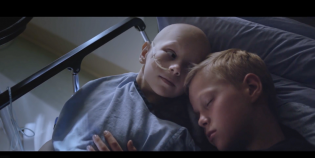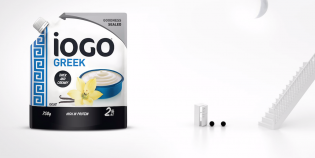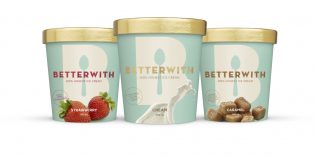Charting the strategic efforts agencies are taking to reinvent themselves
In the olden days of public relations, circa 2009, Julie Rusciolelli used to lock herself in a room with a list of about 100 journalist and editor names. “I used to call it ‘smile and dial,’” says the founder and president of Maverick, a Toronto-based communications firm. “I don’t smile and dial anymore.”
It’s a case of PR business model, disrupted. Media fragmentation and the lightning-quick rise of social media have changed the face of PR. It’s no longer about press releases and pitches: PR agencies are taking their clients’ stories directly to consumers through the vast array of digital communications channels. No media middleman required.
The old PR model doesn’t reflect how people consume media or interact with one another, says Dave Senay, president and CEO of St. Louis, Mo.-based Fleishman Hillard. “People are consuming media in completely new and different ways than in the past. Frankly, they don’t pay that much attention to what’s paid or earned anymore. What they want to know is, is it timely, useful, relevant and credible.”
The changing communications ecosystem has created new opportunities (or threats, depending how you look at it) for the PR industry. Savvy agencies are aiming to capitalize on the shifts by creating new business models, expanding their areas of expertise, upping their creative game and hiring new talent across a range of disciplines. And for those content to keep the status quo, their days may be numbered.
“If you’re a smart PR shop or communications firm, you’re going to have to be very transformative,” says Rusciolelli. “And you can’t take baby steps to change. You have to make revolutionary steps because the changes on the communications side are incredibly rapid. So, my message is you have to change or die.”
Marketing looks at five PR agencies that have made big leaps to survive—and thrive—in the new frontier of PR.
Fleishman Hillard
This past April, Fleishman Hillard set the PR world talking after announcing a major global rebrand that will see the firm evolve into a fully integrated communications company. The rebrand was an evolution of Fleishman Hillard’s 2011 “Go Beyond” platform, which involved big investments in four major growth areas: brand and reputation; analytics and insights; social media; and integration across paid, earned, shared and owned media channels. As part of the global rebrand, Fleishman Hillard introduced a new logo and new slogan, “The Power of True.”
“The vision is to become the most complete communications company in the world,” says Senay. “That means being able to reach anyone, any time, anywhere, with any message through any channel to drive the right kind of outcome.”
To master the paid channel, the Omnicom-owned agency has hired creative directors and planners from the ad agency world. For example, Tom Hudder, former executive vice-president and executive creative director at St. Louis-based Rodgers Townsend/DDB, joined Fleishman Hillard in 2012 in the newly created role of senior vice-president and executive creative director. Nick Childs, formerly of Grey New York, joined Fleishman Hillard’s New York office as executive creative director. And Richard Dale, previously chief planning officer of Leo Burnett Group China, joined Fleishman Hillard in 2011 as director of strategic account planning.
In Canada, the agency hasn’t made any big-name hires from the creative world, but Bill Walker, general manager of Fleishman Hillard’s Toronto office, says “I fully expect that’s what we’ll be doing and where we’ll be headed.”
Walker says the feedback from clients about the changes has been positive so far, although it may take larger clients a bit longer to become dislodged from the traditional model and get on board. “If you’re spending tens of millions of dollars on advertising, you’re probably going to be less likely to make that leap away from a traditional advertising agency. But we’ll eventually get there.”
Edelman
Unlike Fleishman Hillard, Edelman has no plans to get into the business of advertising. But the firm is sharpening its focus on creative storytelling and investing in talent on the creative side. Earlier this year, the company created an internal Strategic and Creative Guild, which is focused on advancing the agency’s creative offering. In Canada, more than a dozen people work within the Guild, a team that includes two creative directors as well as designers, copywriters and video producers.
“The root of our business is storytelling and as clients’ problems become more complex, they are more willing to look [to those] who can give them good ideas to tell a better story,” says John Clinton, CEO of Edelman Canada.
To that end, Edelman Toronto launched StoryLab last year, an “immersive workshop” that aims to push Edelman staff out of their comfort zones and tell stories through a variety of art forms. Participants are paired with different artists, such as photographers or comedians, to tell the same client story in that art form. Each group has three hours to bring their story to life. The workshop has spread to Edelman offices globally.
Edelman is also betting on real-time marketing. In the U.S., the agency launched Creative Newsroom, which works with clients to monitor and respond to news and social media conversations in real time. Edelman has five newsrooms in the U.S. and one in the U.K., all staffed with former journalists, strategists, community managers, analysts and media planners.
Within a two-hour creative cycle, the team can develop and post content that “connects with audiences at the peak of interest for the things they are talking about that day,” according to the company. For example, when Prince Harry’s Vegas adventures were in the news, Edelman created a Facebook ad for Captain Morgan that read, “No, Your Majesty. Harry wasn’t drinking with me.” Other clients using Creative Newsroom include Adobe, ConAgra Foods, Dairy Management Inc. and PayPal.
Maverick
Despite the leaps forward PR agencies have made in areas like social media, the industry is still typecast. “Public relations equals media relations,” says Maverick president and founder Julie Rusciolelli.
To shed that image, Maverick dropped “Public Relations” from the company name in June. As part of the rebranding, the agency changed its Twitter handle to @Maverick_POV and launched a new website, WeAreMaverick.com.
The idea was to more accurately reflect the scope of Maverick’s services, which include experiential events, reputation management, crisis management, product launches and social media campaigns. “PR was an albatross,” says Rusciolelli. “We had to explain [to clients] what we did. That’s a pain. An ad agency never walks into a meeting and has to explain what they do. We had three pages in our Power Point presentation just to explain how we work.”
While Maverick has expanded its remit in recent years, it has no plans to do 30-second ads. “That is not my core competency,” says Rusciolelli. “However, when [a client’s needs] are campaign-centric and they’ve got tight timeframes, they’re not going to say, ‘go find me an ad agency.’” The expectation is they’ll turn to Maverick as a one-stop shop.
That was the case when Richtree Natural Markets hired Maverick in June. The restaurant was getting ready for the September launch of a new 450-seat restaurant at Toronto Eaton Centre. The agency handled the launch event, public relations, social media, creative and an ad buy at subway stations. “They said, ‘you guys understand the story, you also know the Toronto Eaton Centre backwards and forwards, can you put it all together?’” says Rusciolelli. “So we’ve become their marcom shop.”
Hill+Knowlton Strategies
In the new PR world, Hill+Knowlton Strategies is putting its focus on research. In 2011, Hill & Knowlton merged with its WPP cousin, opinion research and business advisory Public Strategies. Hill & Knowlton then rebranded as Hill+Knowlton Strategies to reflect its expanded research capabilities and investments in digital. While H+K was known to be more than “simply just PR… the rebrand was very much an attempt to get us out of the traditional PR box,” says Mike Coates, chairman and CEO of Hill+Knowlton Strategies.
This past summer, the firm launched proprietary consumer panels that will enable it to more thoroughly research clients’ communications plans. “We’re then able to micro-target to tap into consumers who we think can help drive our clients’ product sales,” says Coates.
In another transformational development, H+K is integrating its public engagement service into marketing. In August 2012, H+K acquired Ottawa-based public engagement firm Ascentum. The idea was to integrate the digital tools and philosophy of public engagement into H+K’s core business.
“We think that consumers will increasingly expect involvement in the co-creation of products and services,” says Coates. “That’s because levels of skepticism of both what consumers watch and read have never been higher. Clients need to design their products and services with greater consultation and engagement with the people they want to market to.”
MSL Group
While some PR firms have simply bolted on social media and content marketing functions, MSLGroup is putting content at the centre of the entire operation. The Publicis Groupe-owned agency is moving into a “content-centric communications” agency model. The model is based on delivering strategic big ideas, then leveraging the content over multiple channels with great efficiency, says Gayla Brock-Woodland, president of MSLGroup Canada.
“We’ve always been great storytellers but now we need to produce the content ourselves on multiple channels and we have to do it at a rapid speed,” says Brock-Woodland. “So at the core of every single program we do for a client is the need to create really strong engagement through an emotional connection with the audience.”
To do that means hiring the right talent—and that’s not necessarily PR grads. “Almost everything is going to begin with developing that big idea for social media and that means that we need people who can create content really quickly that’s astoundingly good,” says Brock-Woodland. “Some of the new positions [will] be filled by people who used to produce for TV or worked for entertainment or other creative spaces.”
Another increasingly important job title at MSLGroup will be research analysts. “The audiences are vastly different, from the baby boomer to the millennial to a Gen X,” says Brock-Woodland. “They’re oceans apart with their behaviours with technology, where they get info from and what they care about. So the role of research and insights to come up with the idea that’s going to resonate is also hugely more important.”
With its new model, MSLGroup will work across earned, owned and paid media with “full-scale ideas and full-scale execution,” says Brock-Woodland. She points to the instantly famous PR execution from Australia—Metro Trains’ Dumb Ways to Die, which won the Grand Prix at the 2013 Cannes Lions. The campaign included a humorous animated video to encourage rail safety, as well as a game, advertising and social media. “[It had] everything coming together in an astonishing way, but the story is smart and entertaining and shows how much they really understood their audience and what it was going to take to make this come alive,” says Brock-Woodland.
The thing is, PR has to do more than just rebrand if it wants to sit at the table with ad agencies; Dumb Ways to Die was developed by an advertising agency, McCann Melbourne. In fact, the PR Lions awards were dominated by ad agencies. “There’s no question that we’re going to be competing head on with advertising agencies,” says Brock-Woodland. “And we’re going to have to earn those awards by coming up with brilliant ideas.”













